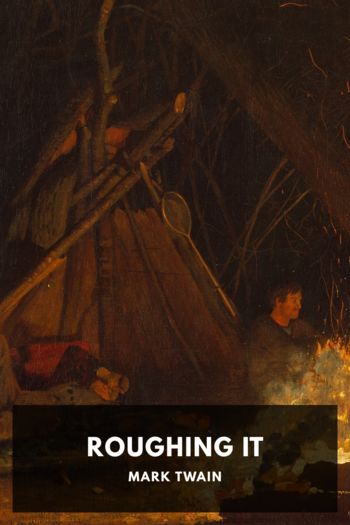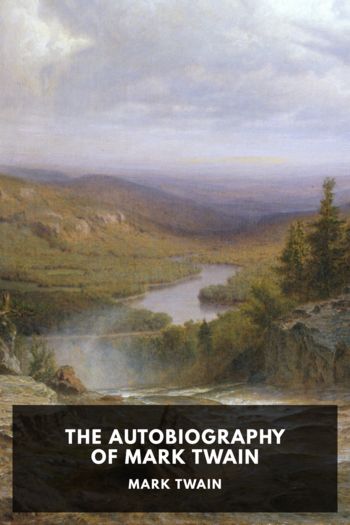Roughing It, Mark Twain [dark books to read .TXT] 📗

- Author: Mark Twain
Book online «Roughing It, Mark Twain [dark books to read .TXT] 📗». Author Mark Twain
To show what a wild spirit possessed the mining brain of the community, I will remark that “claims” were actually “located” in excavations for cellars, where the pick had exposed what seemed to be quartz veins—and not cellars in the suburbs, either, but in the very heart of the city; and forthwith stock would be issued and thrown on the market. It was small matter who the cellar belonged to—the “ledge” belonged to the finder, and unless the United States government interfered (inasmuch as the government holds the primary right to mines of the noble metals in Nevada—or at least did then), it was considered to be his privilege to work it. Imagine a stranger staking out a mining claim among the costly shrubbery in your front yard and calmly proceeding to lay waste the ground with pick and shovel and blasting powder! It has been often done in California. In the middle of one of the principal business streets of Virginia, a man “located” a mining claim and began a shaft on it. He gave me a hundred feet of the stock and I sold it for a fine suit of clothes because I was afraid somebody would fall down the shaft and sue for damages. I owned in another claim that was located in the middle of another street; and to show how absurd people can be, that “East India” stock (as it was called) sold briskly although there was an ancient tunnel running directly under the claim and any man could go into it and see that it did not cut a quartz ledge or anything that remotely resembled one.
One plan of acquiring sudden wealth was to “salt” a wild cat claim and sell out while the excitement was up. The process was simple. The schemer located a worthless ledge, sunk a shaft on it, bought a wagon load of rich “Comstock” ore, dumped a portion of it into the shaft and piled the rest by its side, above ground. Then he showed the property to a simpleton and sold it to him at a high figure. Of course the wagon load of rich ore was all that the victim ever got out of his purchase. A most remarkable case of “salting” was that of the “North Ophir.” It was claimed that this vein was a “remote extension” of the original “Ophir,” a valuable mine on the “Comstock.” For a few days everybody was talking about the rich developments in the North Ophir. It was said that it yielded perfectly pure silver in small, solid lumps. I went to the place with the owners, and found a shaft six or eight feet deep, in the bottom of which was a badly shattered vein of dull, yellowish, unpromising rock. One would as soon expect to find silver in a grindstone. We got out a pan of the rubbish and washed it in a puddle, and sure enough, among the sediment we found half a dozen black, bullet-looking pellets of unimpeachable “native” silver. Nobody had ever heard of such a thing before; science could not account for such a queer novelty. The stock rose to sixty-five dollars a foot, and at this figure the world-renowned tragedian, McKean Buchanan, bought a commanding interest and prepared to quit the stage once more—he was always doing that. And then it transpired that the mine had been “salted”—and not in any hackneyed way, either, but in a singularly bold, barefaced and peculiarly original and outrageous fashion. On one of the lumps of “native” silver was discovered the minted legend, “ted States of,” and then it was plainly apparent that the mine had been “salted” with melted half-dollars! The lumps thus obtained had been blackened till they resembled native silver, and were then mixed with the shattered rock in the bottom of the shaft. It is literally true. Of course the price of the stock at once fell to nothing, and the tragedian was ruined. But for





Comments (0)